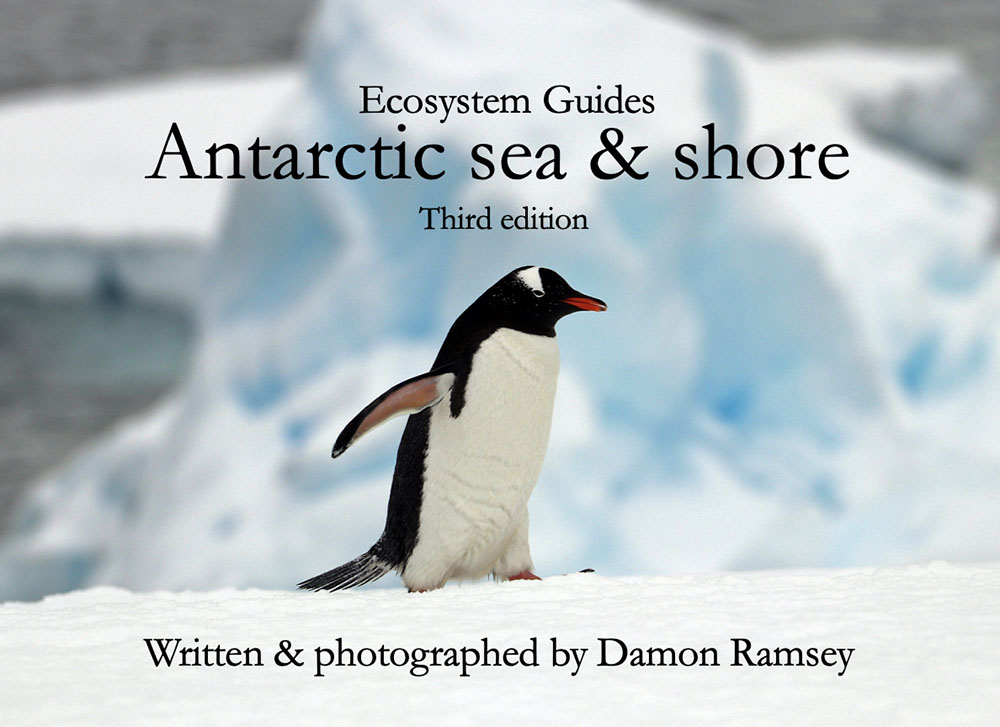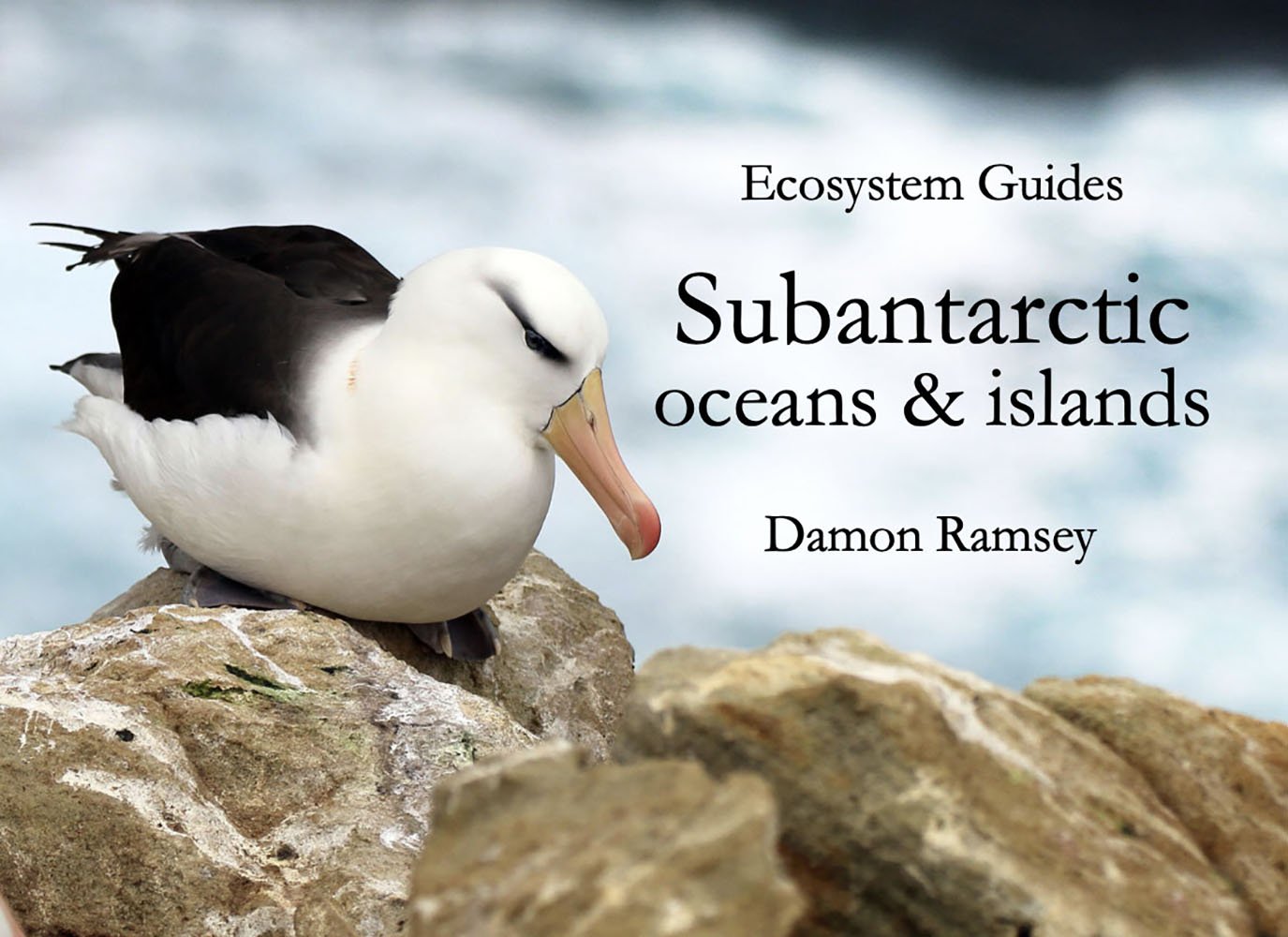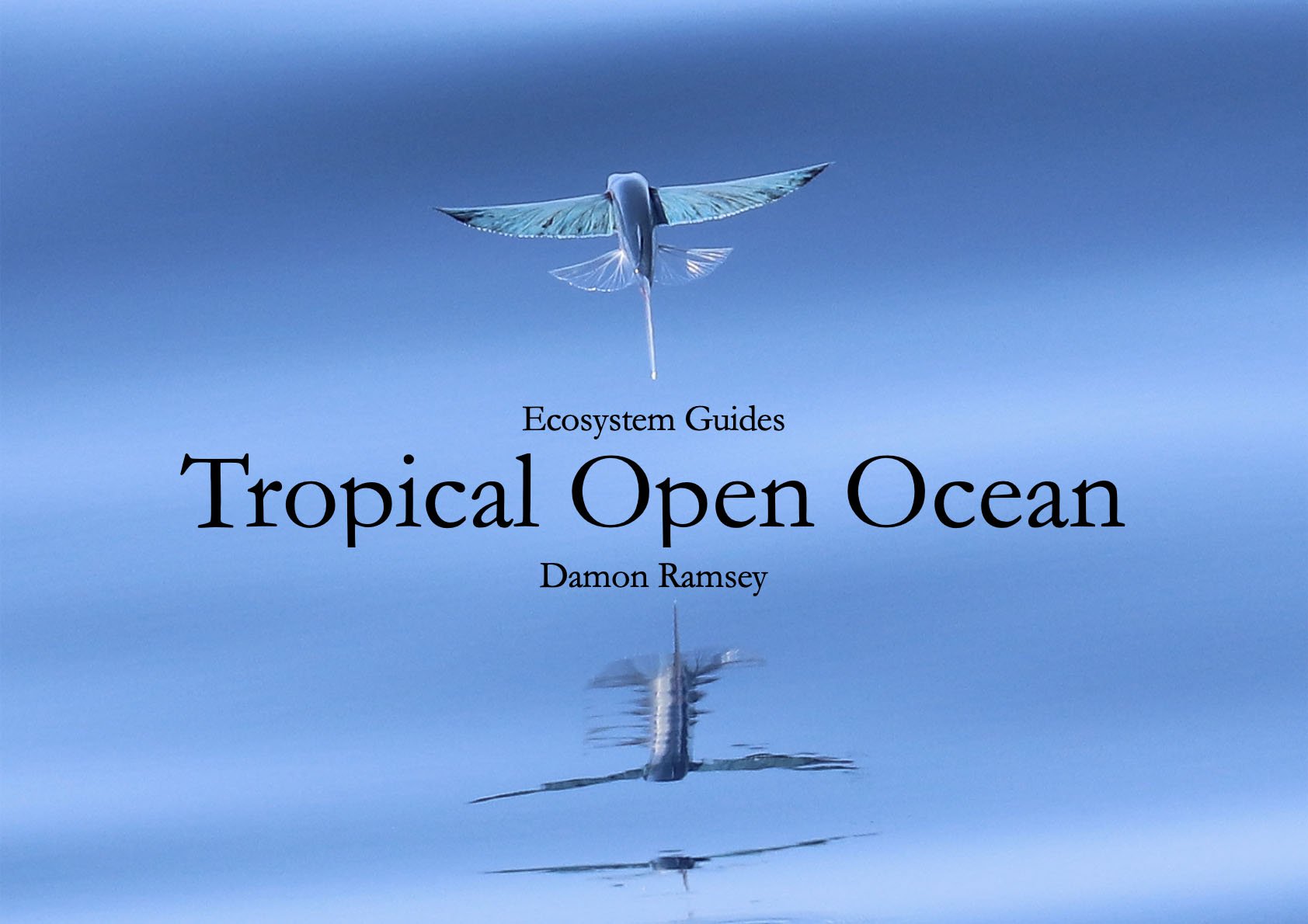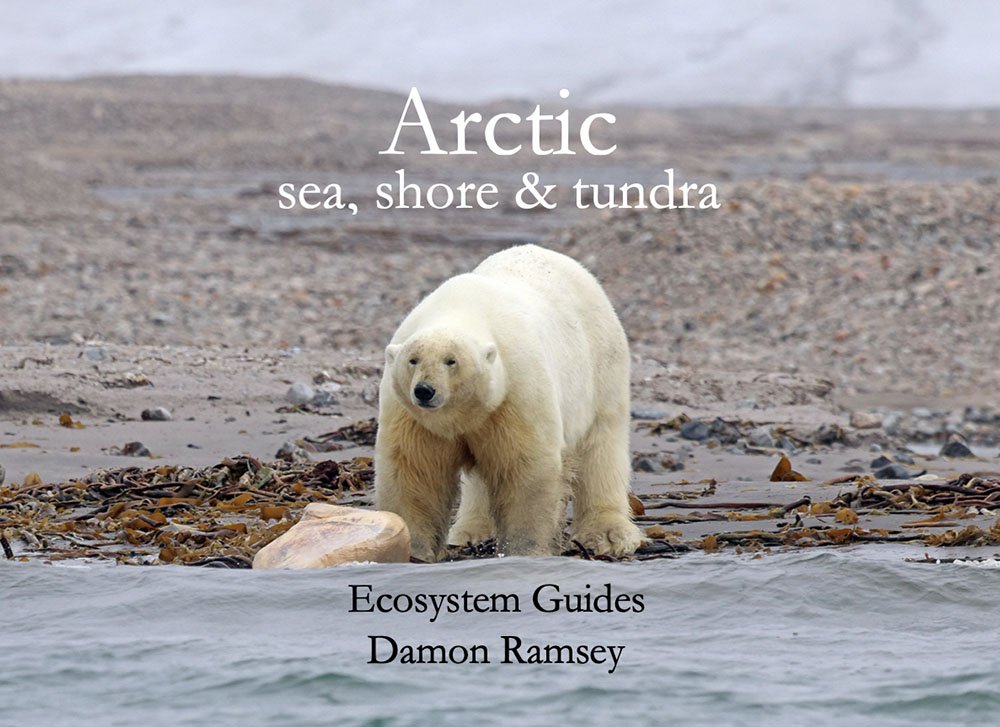ecosystem-guides.com
....exploring the planet's ecosystems
Trip Report August 2025
West coast Australia
Silver Cloud, Silversea
Yes, you can download/copy these images for free. Or on any of the linked pages. On Safari through a Mac, simply right click and "save images to downloads". As usual, I have avoided most mentions of names of specific crew, staff or passengers for privacy reasons. Unless I really want to embarrass you.
Expedition trips don't do the west coast of Australia (south of the Kimberley) very often. So when we do, I try to jump on. I worked as an expedition leader in 2021 for a couple of these Perth-Broome/Darwin trips with Coral Expeditions, and then later as a guide/lecturer with Silversea. It gives access to arid Western Australia including remote rarely visited islands. However, the reason we don't do it very often becomes obvious on most trips, the consistent winds! Unlike the protected Kimberley, the rest of the WA coast is exposed. In fact, the highest winds ever recorded on a coast anywhere on the planet were from this area, near Barrow Island.
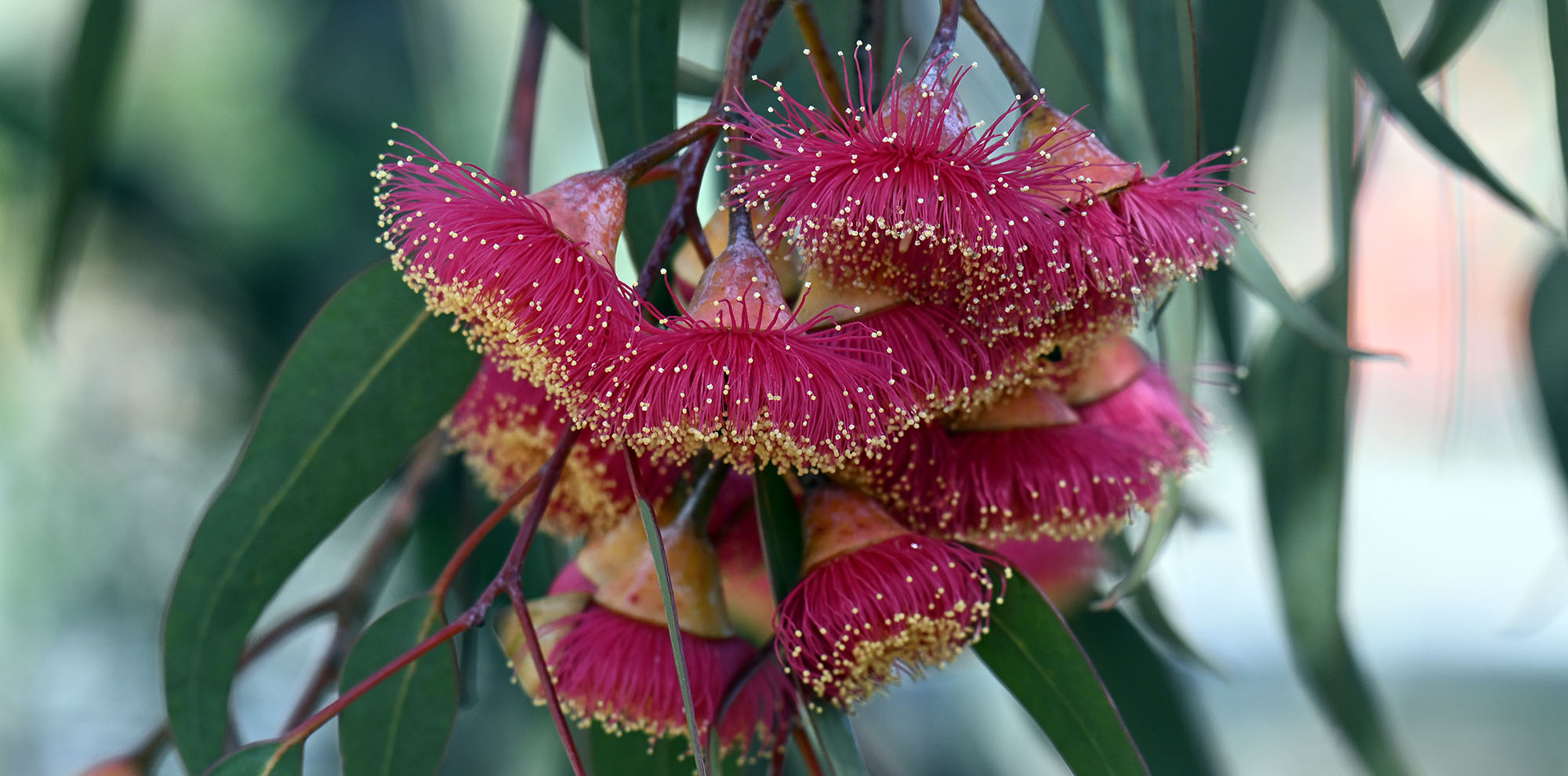 Eucalptus caesia, Perth
Eucalptus caesia, PerthThe walk we do at Shark Bay with expedition companies is the stroll along the sand dune ridge which ends at Skipjack Point. There are usually great arid zone flowers and birds to be seen on the walk, such as the Singing Honeyeater in the image below. We always see some sort of wildlife from the viewpoint: even with cloudy and slightly sloppy sea conditions we saw groups of Devil Rays, Cowtail Ray, sharks, and glimpsed a Guitarfish.
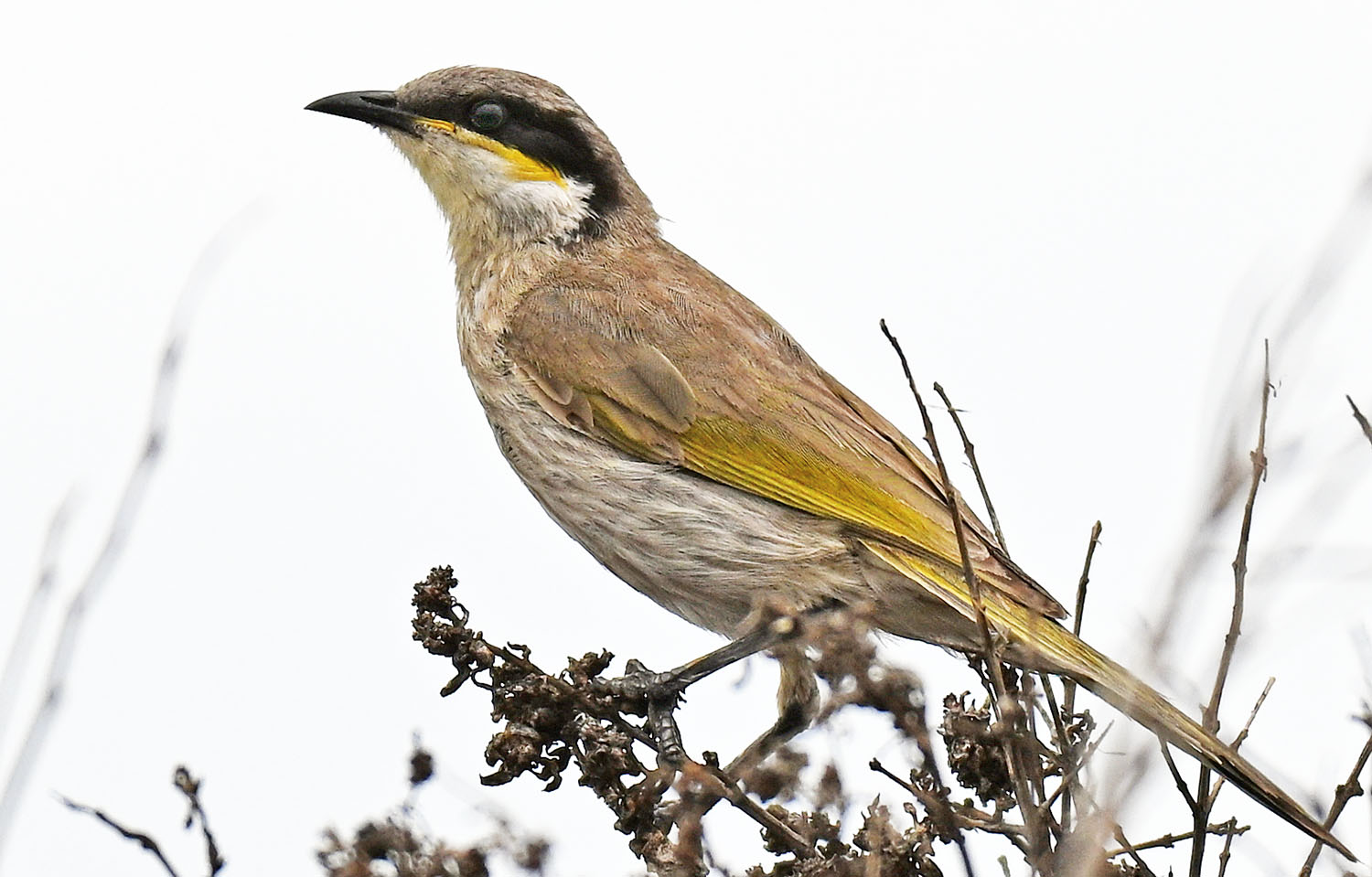 Singing Honeyeater
Singing HoneyeaterWe had an extra half day at Shark Bay, which allowed for a cruise along the inland side of Francis Peron national park, just south of Skipjack. Apart from the beautiful red cliffs and some Cormorants, there wasn't much wildlife, and this confirmed why the viewpoint was built at Skipjack point further north: this was where the animals were.
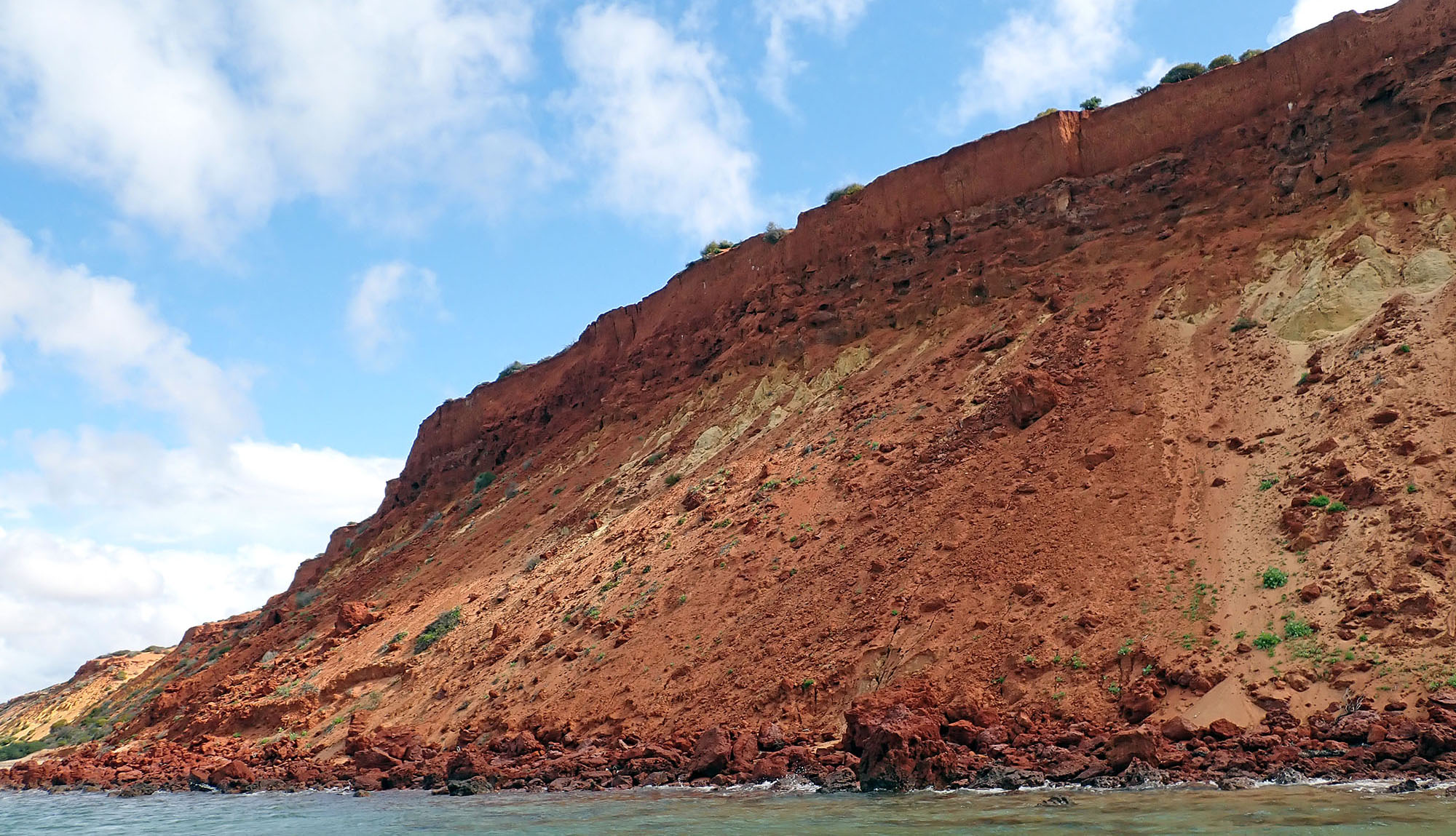 the red cliffs
the red cliffsThe Muiron Islands can be pretty windy and wild. Today we enjoyed some of the (relatively) best conditions I have seen. Despite it's proximity to Ningaloo Reef, the coral here is not incredible, but today's calmness at least allowed for some visibility in the often churned up water.
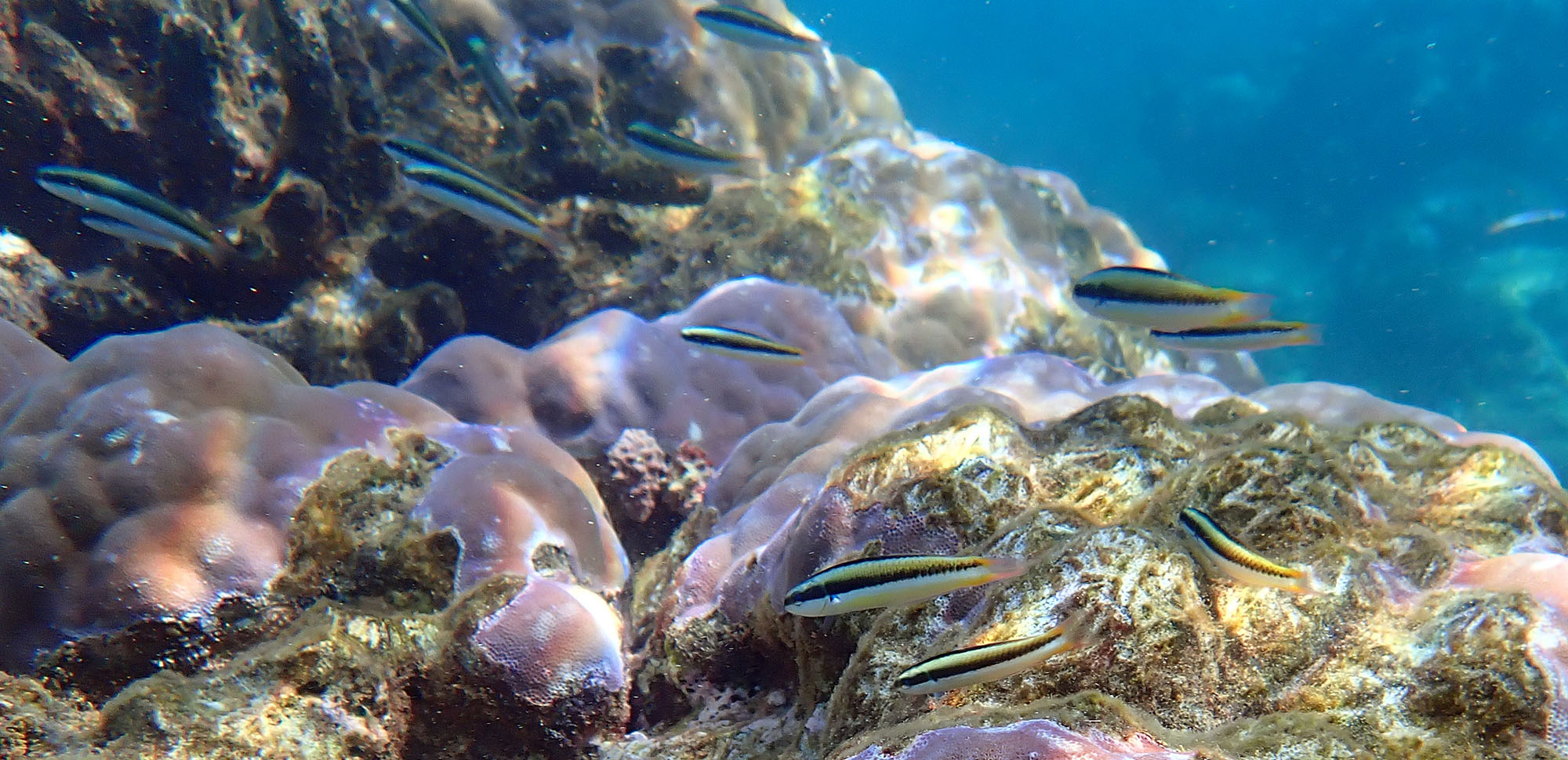 Pixy Wrasse....maybe?
Pixy Wrasse....maybe?While we wold normally visit the fascinating 'blast site' of the Montebello's nuclear test site, and enjoy looking for the rare Rufous Hare-Wallaby, a decision was made on the previous trip to no longer go there. So instead we backtracked to a couple of landings we had tried in previous years. It was another good chance to explore the arid coastal communites. Lots of Pussy Cat Tails!
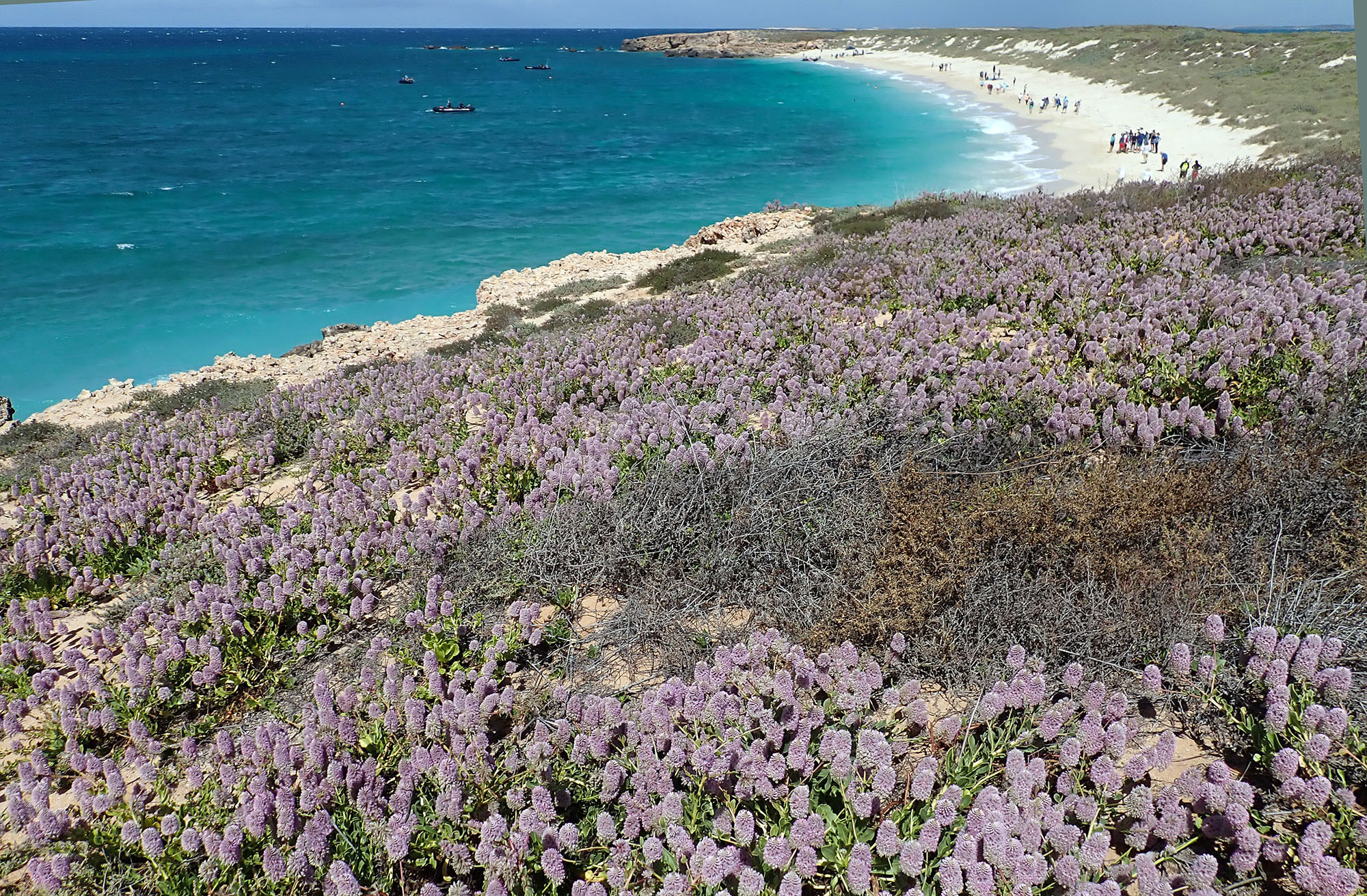
The Dampier Archipelago is a complex collection of islands surrounding the port and marine lanes into industrial port of Karratha. Apart from lonely large container ships in the distance, the islands are remote and empty of humans. Over the years with several expedition companies we have settled on a landing at Enderby, where there is great perch to watch bouncing Rothschild's Rock Wallabies. That day we did a variety of walks, and I was on the long one. We circled back along the beach, and were witness to an event that occurs mainly on the north west coast of Australia; the attack of the killer tomatoes! These round 'Tomato Jellies' in various shades of red, have been washing up in large blooms along the Pilbara coast for several decades.
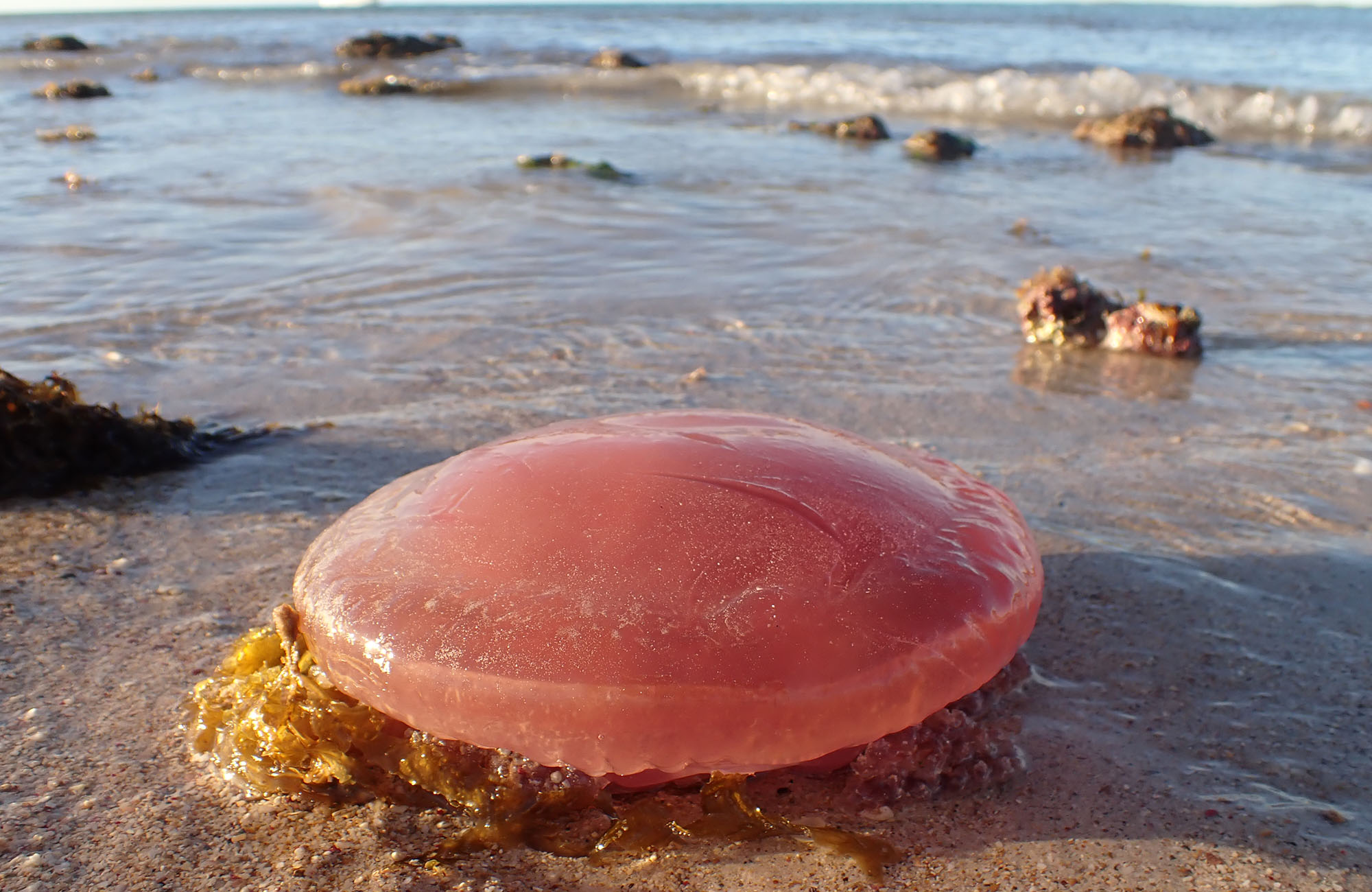
The longer trip included three possible landings at tropical seabird breeding islands. The best of the three is the Lacepede Islands. I have been here many times and have many photos, but there is always something new to see and snap. This time it was a family of Oystercatchers.
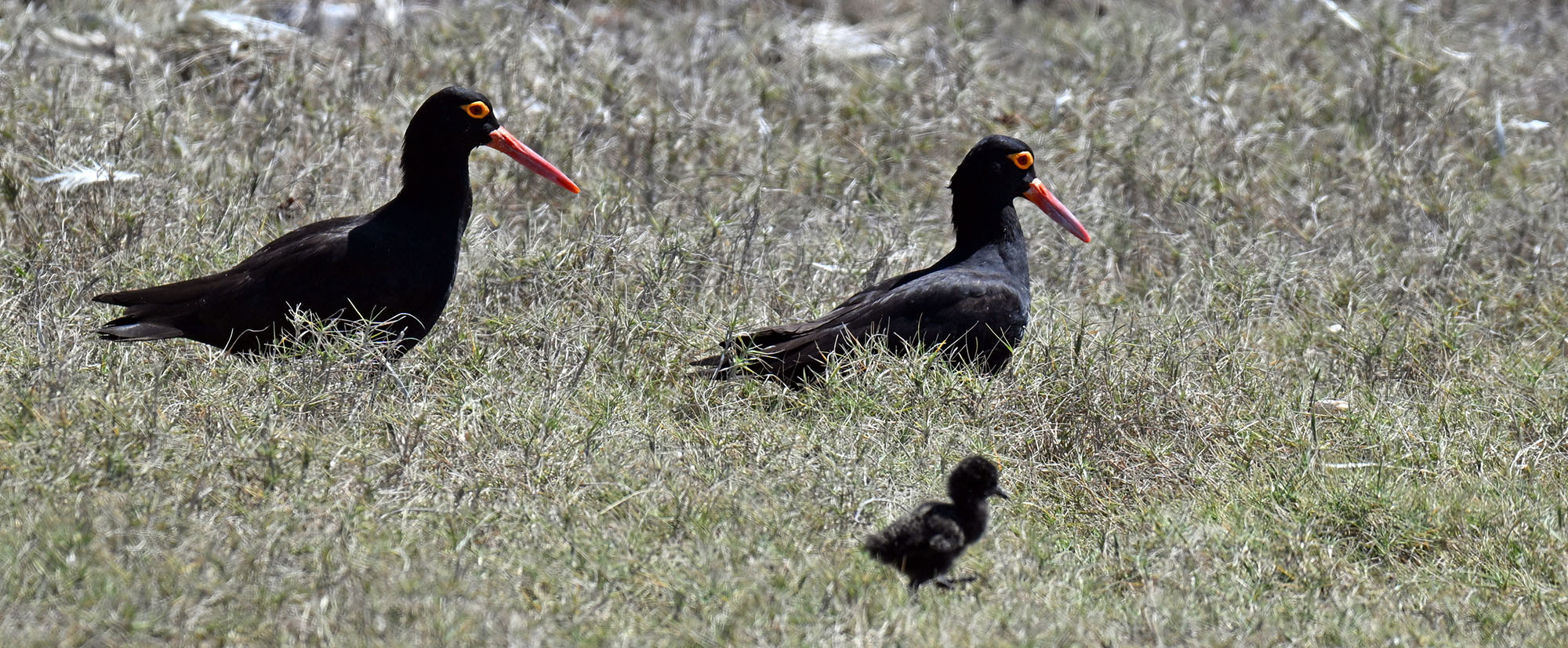
While in the Kimberley we almost never miss out on the Horizontal Waterfalls. Even if it is a slack tide and the 'falls' are not that fast flowing, the area at the back of Talbot Bay is always inspiring. I got some great views of the 'White-Quilled Rock Pigeon', an endemic to the escarpment country within the Kimberley.
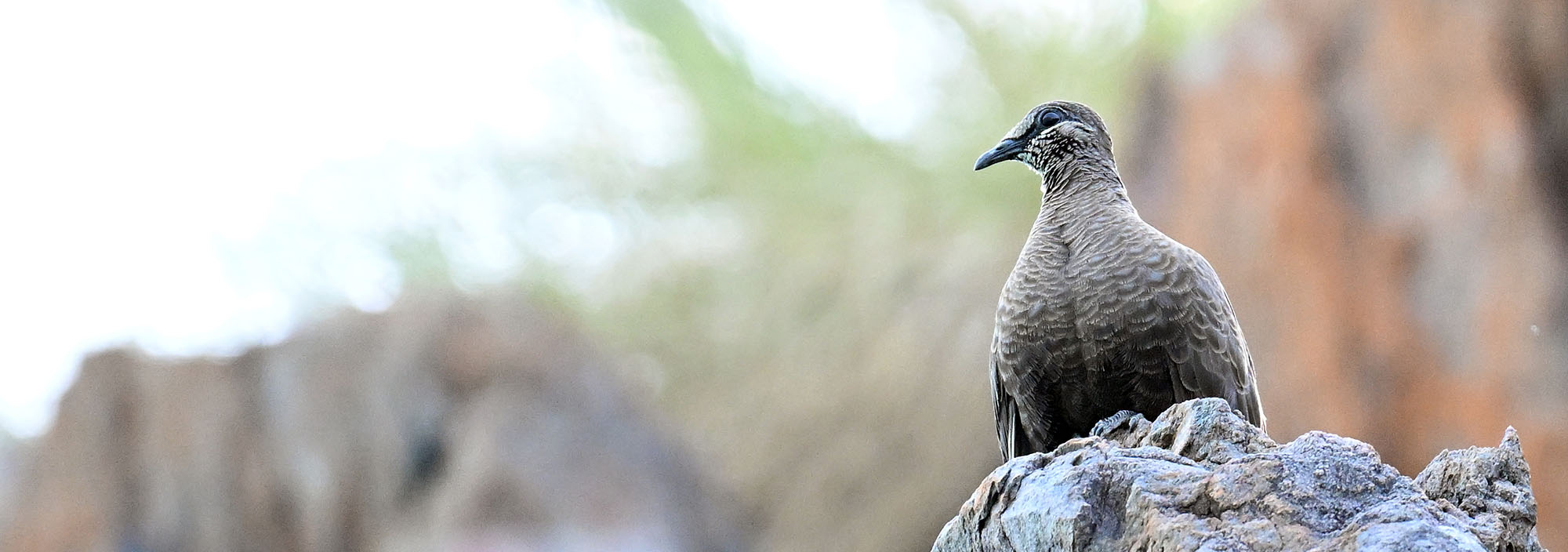
The Hunter River is often considered the heart of the Kimberly coast, and is a mass of mangroves. A zodiac cruise in the morning on an incoming tide always produces wildlife, and it is never the same set of species. A highlight this time was close-up views of the shy Mangrove Robin (image below).
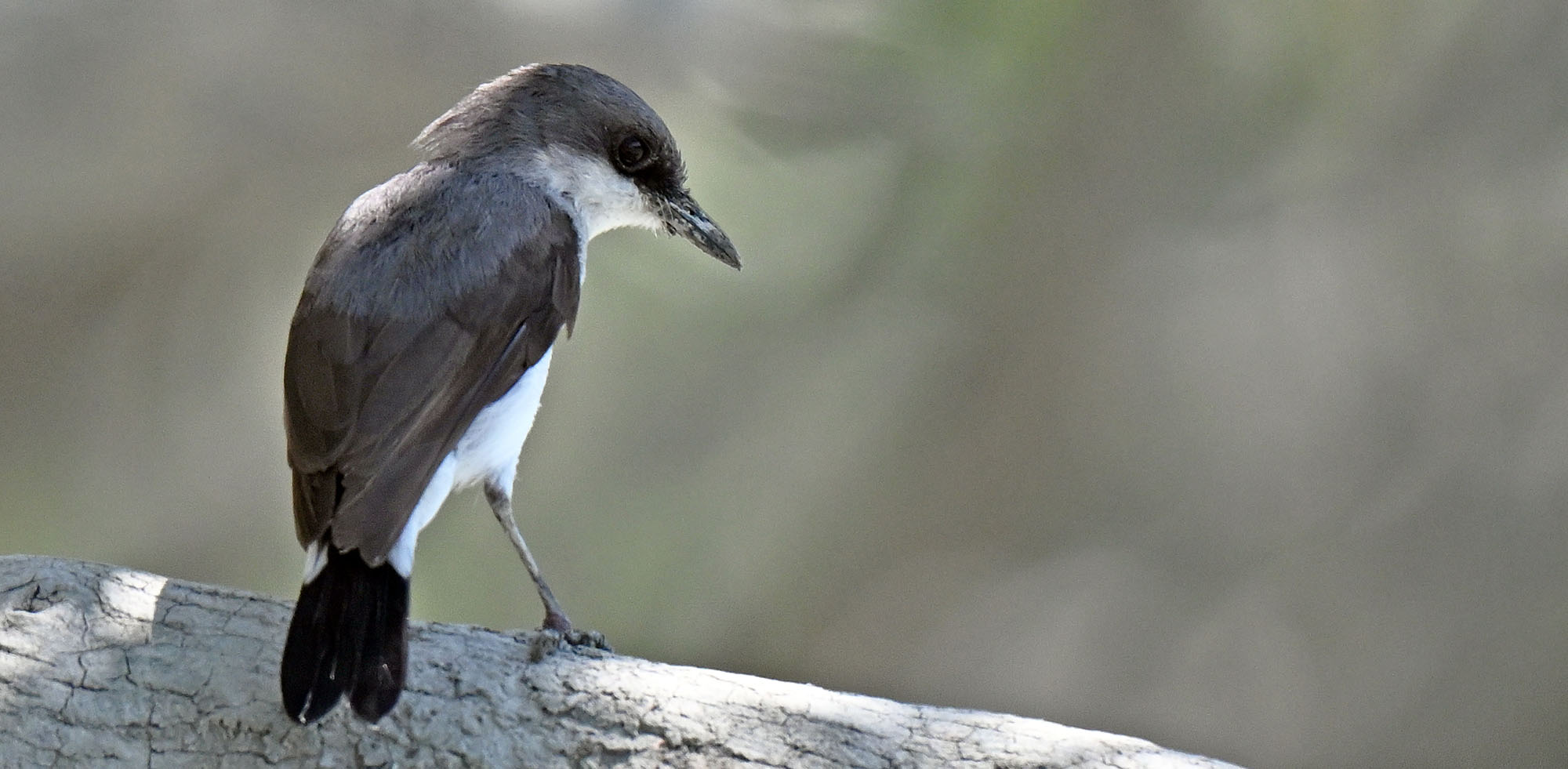
A cruise along the Kimberley coast never misses Montgomery Reef. Even on a slack tide it is spectacular. Pictured below is a cormorant drying it's wings on top of the massive emerging reef.
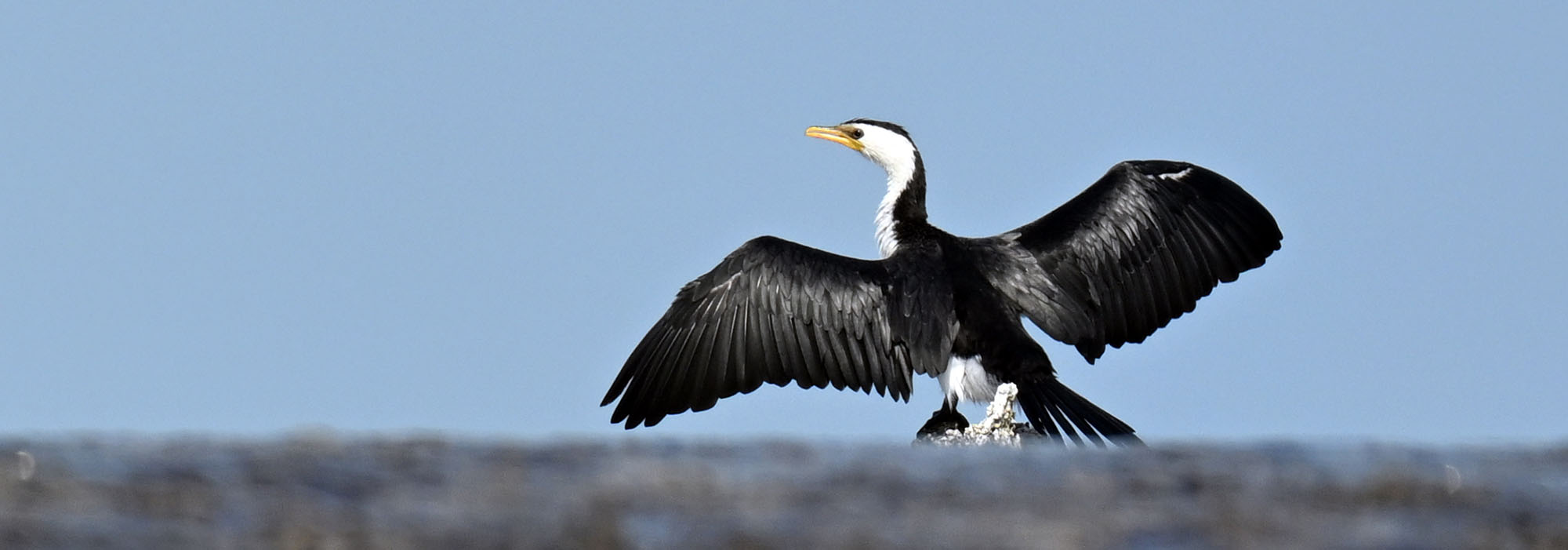
On a typical Kimberley visit we always visit at least a couple of sites of Aboriginal rock art. I can't really show images here for permit reasons, but there is often cool wildlife hidden away around and on the rocks. On almost every trudge up to the Freshwater caves we see tiny dragons on the track...
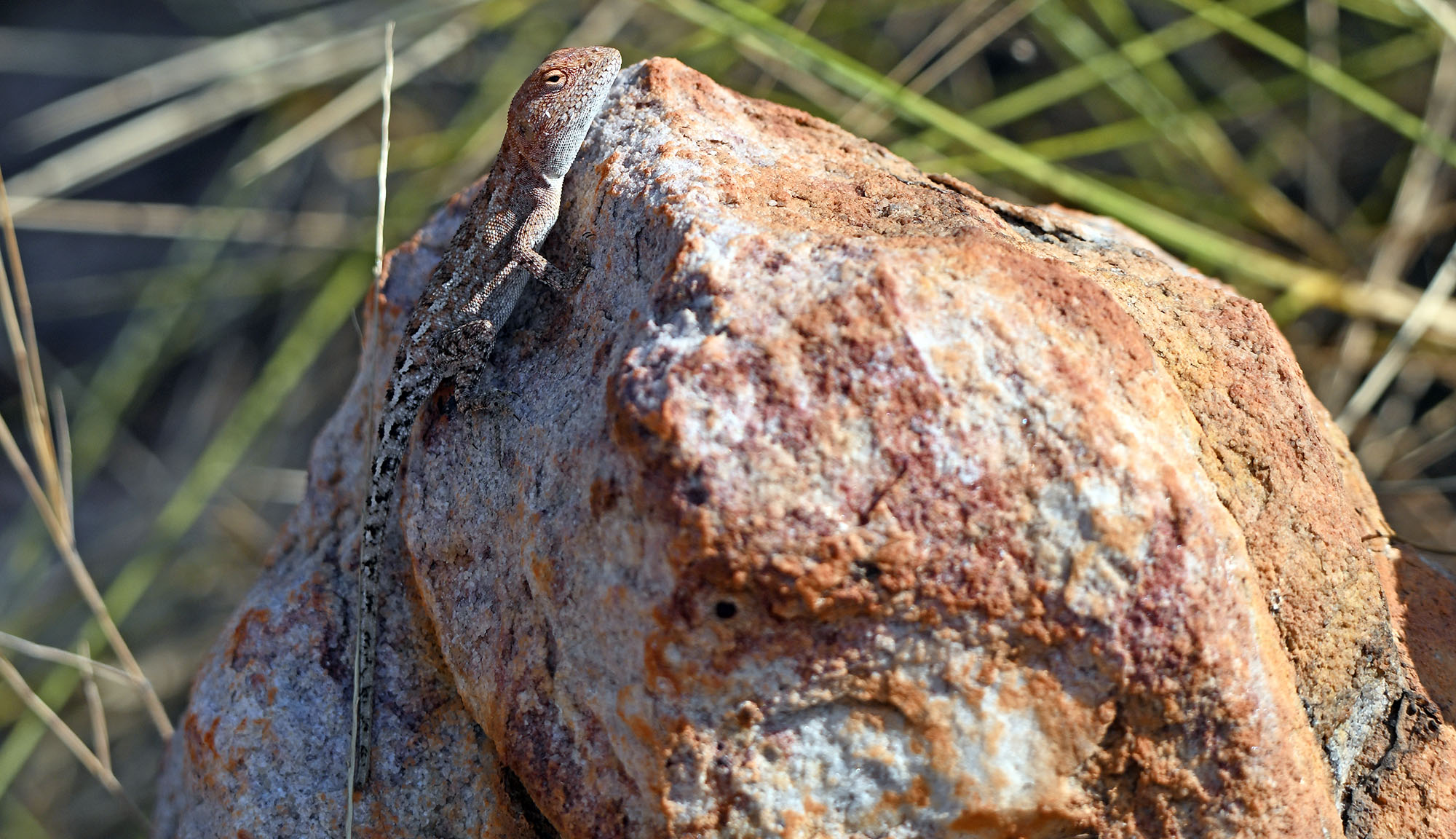
One of the wildlife highlights of the trip during the Kimberley section was the Anjo Peninsula. Most trips we walk to a cool plane wreck of a C53 from World War 2 days. This is an easy and safe walk (no stumbling over rocks!) and as we are so much further east in the Kimberley, there is always some interesting plants and animals to see, and it varies throughout the year. Cocky Apple and Paperbark were flowering, and there was a lot of birds, including the stunning Red-headed Honeyeater (image below).
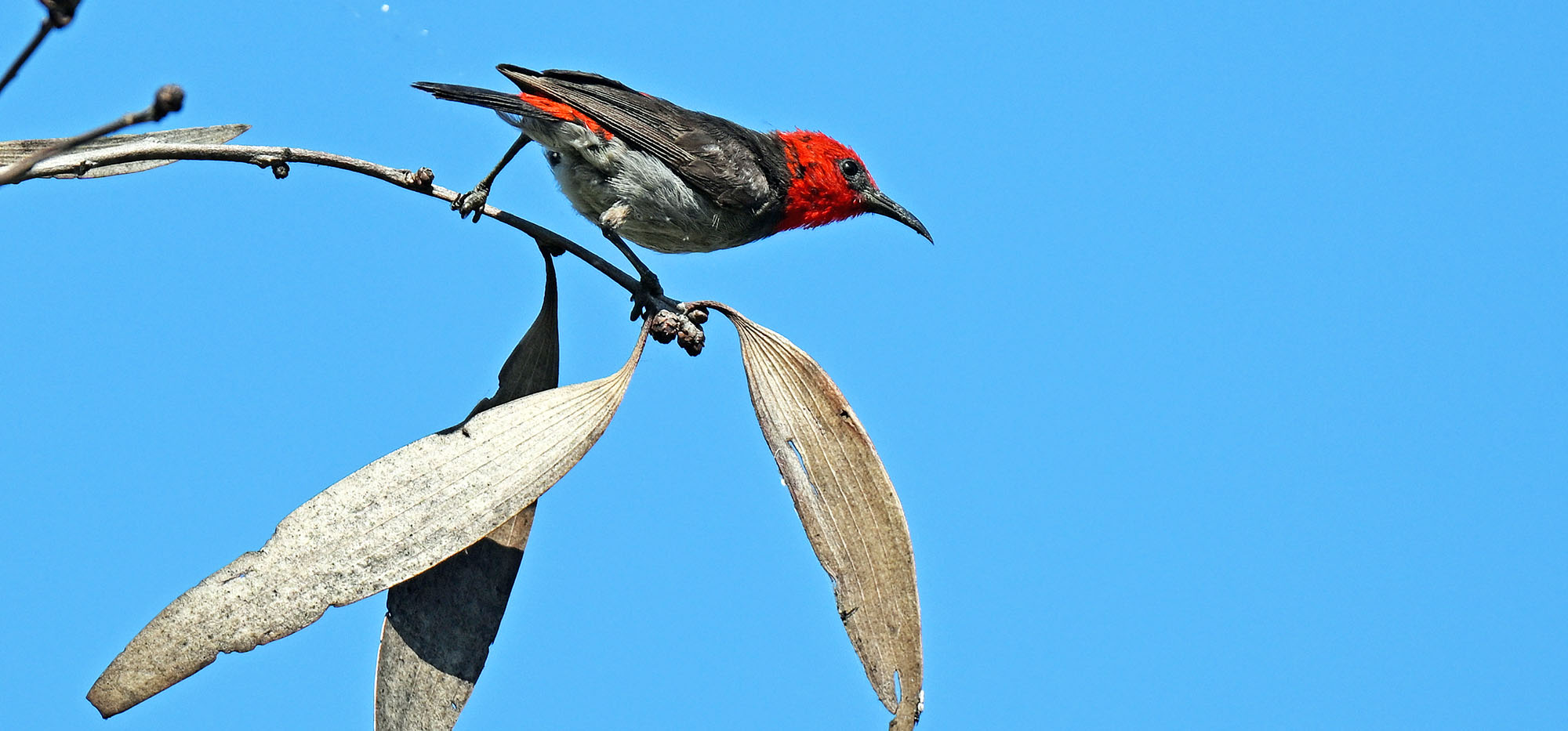 the tiny but pretty Red-headed Honeyeater
the tiny but pretty Red-headed HoneyeaterThe trip officially ended in Darwin. But for the passengers that were staying on all the way until Chile (including myself), we visited the Finnis River station. This was the only site on the whole trip I had never been to, and the highlight was the flight over the freshwater wetlands, river and coast.
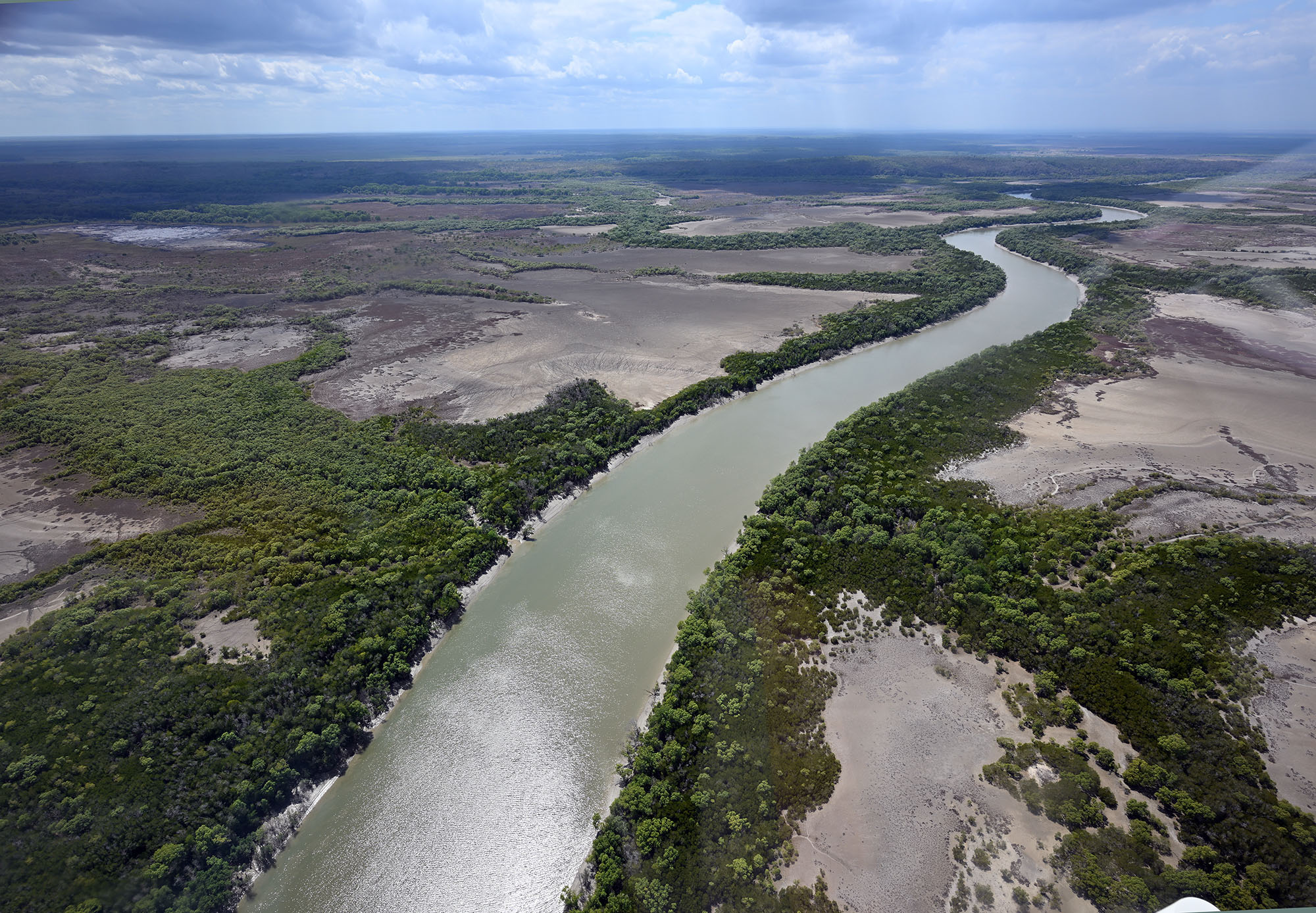
to search this website (and the internet):
Your second block of text...
